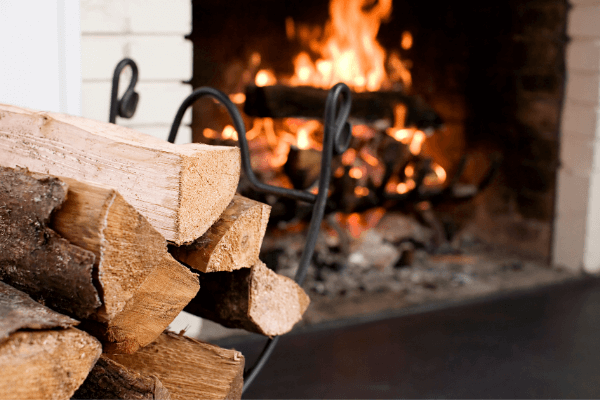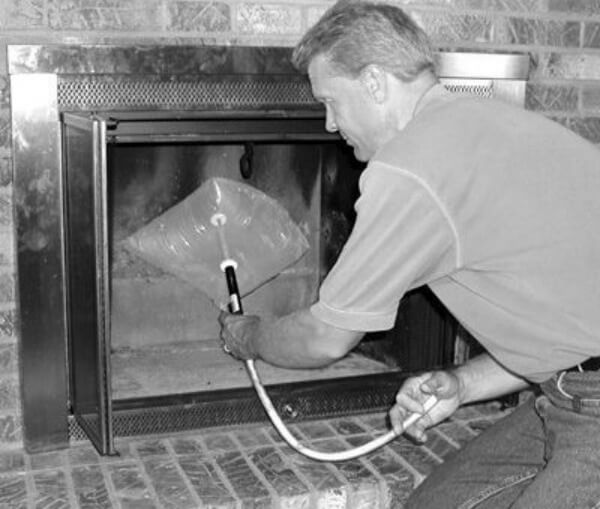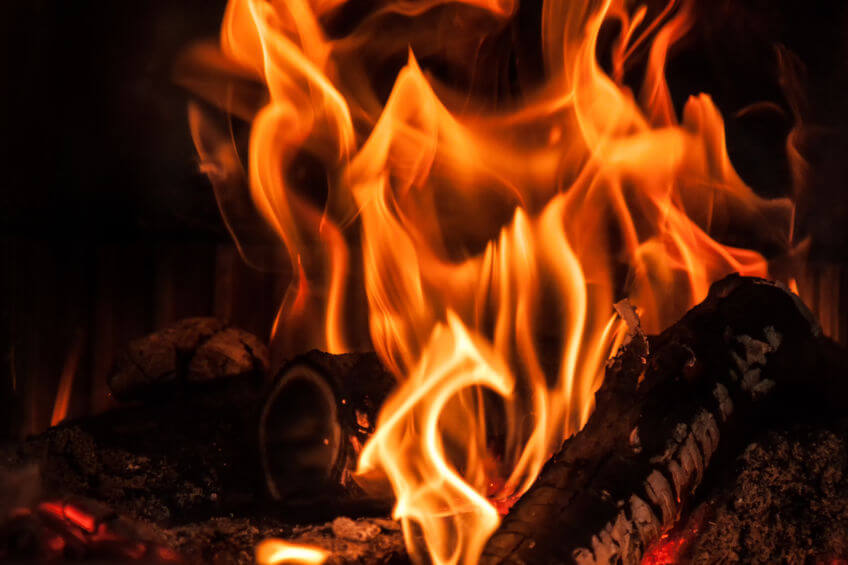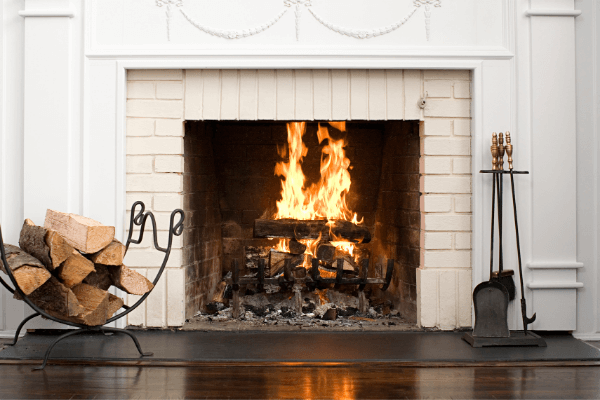- Home
- Heating With Wood
- Heating With a Fireplace
Heating With A Fireplace
This post may contain affiliate links so I earn a commission.
When heating with a fireplace you get the warmth and beauty of a natural fire for everyone to enjoy.
On a cold winters day nothing may be more relaxing and comforting than a fire in the fireplace.
But, does heating with a fireplace actually supply positive, sustained heat to your home?
Surprisingly no.
Studies show that a fireplace is not very efficient in heating your home.
A natural fireplace without any added amenities may only reflect 15% of the heat into your room.
The rest goes up the chimney.
Why are they so inefficient?

Most older, traditional fireplaces are installed with a throat damper near the bottom of the chimney.
Over time these dampers become warped or damaged allowing warm air from your home to escape straight up the chimney.
In other cases the damper is left open allowing the heat to flow outside without any restrictions.
As the fire burns it draws in cold air throughout the house to replace the heated air creating a draft.
Over time a fireplace can actually loose more heat than they create.
How Do I Keep Cold Air From Coming Up My Fireplace?
To make heating with a fireplace more efficient, a couple of things can be done to prevent some of the heat from escaping up the chimney.
Installing a top sealing damper can help reduce heat loss through the chimney when the fireplace is not in use.
These are installed at the top of the chimney and can also prevent bugs and animals from entering your home.

An inflatable damper or inflatable plug can also be used to seal off the chimney.
Often called a chimney pillow, these offer a low cost and relatively easy way to help reduce unwanted heat loss.
Installing fireplace doors can also help reduce heat loss.
However, fireplace doors can be expensive and do not prevent all heat from escaping.
They do not create an air tight seal and will still allow some heat to escape.
They do however allow you to close off the fireplace to help prevent sparks and rolling logs from escaping.
This can be especially helpful at the end of the night when you're ready to go to bed and you don't want to leave a fire unattended.
By closing the glass doors you'll help prevent sparks from escaping, and you'll also prevent a log from rolling out of the fireplace.
Do Fireplaces Make Your House Colder?
Since a fireplace is very inefficient, heating with a fireplace can actually make your house colder, instead of warmer.
Make no mistake though, a vast majority of home buyers want a home that's equipped with a fireplace.
We all love the enjoyment of sitting around a crackling fire as the wood heat warms your body.
However, even though you may enjoy the immediate warmth, a fireplace is typically made for asthetics and not efficient heat.
Since most of the heat generated by the fire goes directly up the chimney, you don't get a lot of heat that's projected out into the room.
Plus, a fire needs oxygen to burn.

Since an open fireplace is not a sealed unit with an outside air souce, like you would find in high efficiency fireplace inserts, the outside air is pulled through every small gap throughout your home.
If you're burning your fireplace in the winter (which would be expected) you're esentially pulling cold air into your home as you attempt to warm it with the fireplace.
You probably won't notice the difference while the fire is burning if you're sitting nearby, but after you go to bed and the fire dies down, the warm chimney is still drawing cool air into your home as the hot air rises outside.
Throughout the night, since the fireplace damper is wide open as the fire cools, you'll actually loose more heat than you gained.
How Can You Circulate Heat From Your Fireplace Throughout Your Home?
One of the easiest ways to circulate heat throughout your home is by using a ceiling fan.
Set your ceiling fan so it rotates in a clockwise direction at a low speed.
By operating in a clockwise direction, you'll be able to pull the cold air up off of the floor, which in turn causes the hot air to be pushed down.
If you're experiencing a cold back bedroom or office, you can use a standard box fan to help circulate the heat.

To use a fan, place it near the cold room you want to heat and allow the fan to blow the cold air towards the fireplace.
Although it may seem logical to blow the warmer air into the room, it's better to move the cold air towards the heat.
This causes a convection-reaction that forces the heat away from your fireplace towards the colder room.
Overall - Heating With A Fireplace
It is important to have your fireplace inspected regularly by a professional for creosote buildup and any hazardous defects.
If you live in a cold weather climate chances are you know someone who has had a chimney fire.
A natural fire can provide an ambiance to your home like nothing else.
Although they are nice to look at, a heating with a fireplace is not the most efficient way to reduce your heating costs.
If you are looking to eliminate high heating bills, another heating device like a wood stove or a wood burning fireplace insert would be more effective.

About the Author
Obsessed with firewood, Nick is behind over 350+ of Firewood For Life's articles, as well as countless reviews, guides and YouTube videos to help readers like you reduce heating costs and create the perfect fire.


